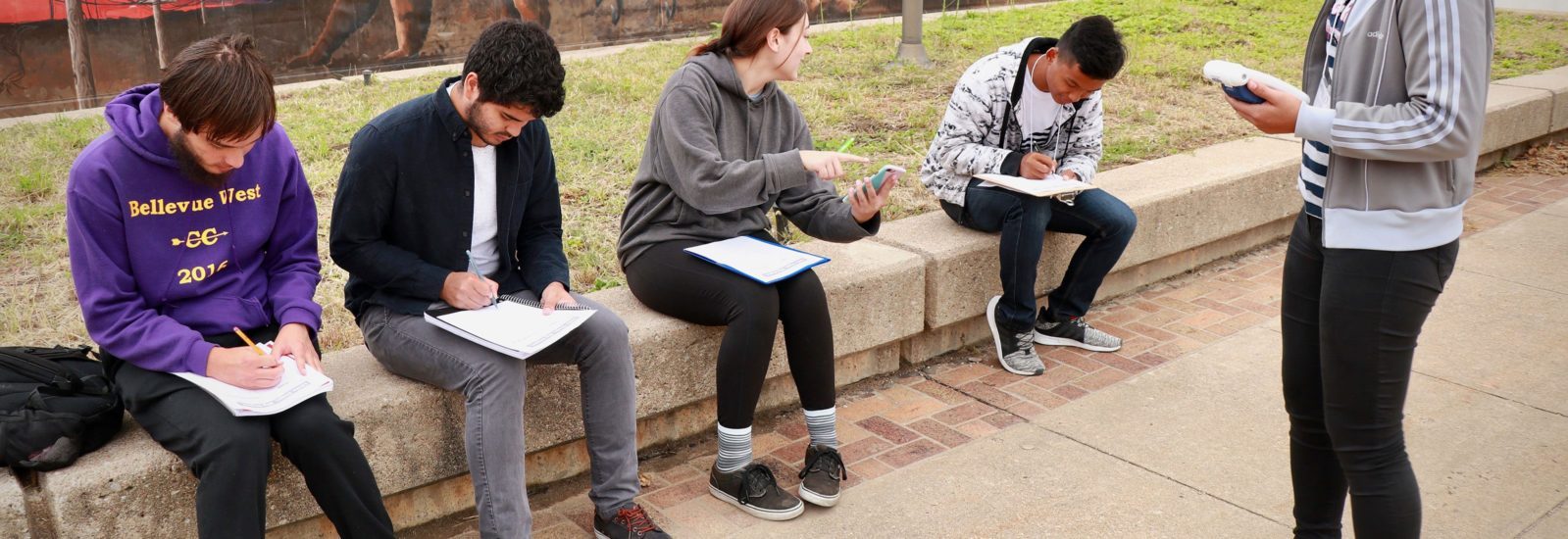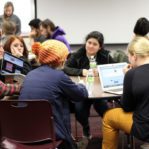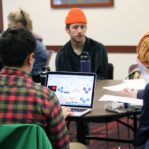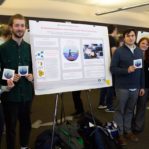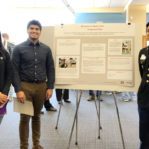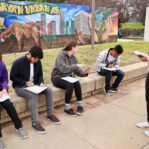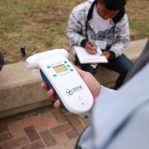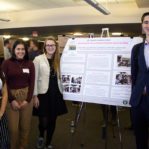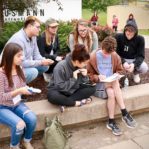Students from UNO Instructor Farrah Grant’s “Introduction to Sustainability” course collaborated with Bryan High School students in Royonna Bristol’s “Honors Environmental Science” class. In partnership with Little Steps Cleaner Air, students used handheld ozone monitors to measure ozone concentrations in the air at Bryan High School. Using knowledge gained throughout the semester, students developed communications projects, which informed campus users about air quality and maintaining an idle free zone.
Group 1:
“An Awareness Initiative to Combat Ground Level Ozone in School Zones”
This group titled its campaign for raising awareness about ground level ozone pollution and reducing idling NoZone. During the presentation, at the UNO/OPS Joint Research Symposium, the students remarked that “We hope with this campaign to encourage saving money and respecting school campuses while combatting pollution, with the simple action of shutting off your car’s ignition while at rest.”
The group’s main tactic was the design of a sticker that people can display on their cars, laptops, or other items to create awareness of ground level ozone and end engine idling. The students also proposed a larger campaign with informational pamphlets, ads at local events, posters, or even billboards. “By diminishing public ignorance on the topic of engine idling and its role in ozone production,” they added, “we believe that engine idling will be reduced as well.”
Group 2:
“Snapchat Filter”
The second group opted to use a Snapchat filter as a means of promoting idle-free zones and educating people about ground level ozone. “Snapchat is an effective way to spread a message because it appeals to a younger audience,” the students noted in their presentation, “and is an inviting way to promote community engagement. By targeting a younger audience, we are able to educate the future generation of decision makers.”
Compared to other social media channels, Snapchat is more popular among the age ranges who are most effected by ground level ozone. “Our filter encourages people to actively promote change by placing their own photo behind the filter and sharing it,” the group concluded, “rather than just looking at a problem passively.”
Group 3:
“Addressing the Issue of Ozone Emissions due to Car Idling”
This group created a poster to educate people on the creation of ground level ozone caused by idling. In addition to hanging printed posters around the high school, the group suggested placing digital versions of the posters on message boards around UNO’s campus. “The posters could also be turned into signs to post in parking lots on campus where idling is at an unnecessary high,” the students added.
They suggested sending a survey to teachers and students before starting the campaign, and another survey afterward, to quantify the results of the posters and signs. “If the results are as positive as we hope they are, we’d like to spread the posters and signs throughout the Omaha area.”
Group 4:
“The Effects of Car Idling on Ground Level Ozone Readings”
The next group took a two-pronged approach to educate the Bryan High and UNO campuses on the harmful effects of ground level ozone, and changing their habits to improve air quality. The students created a poster to share on school grounds to raise awareness of these effects and what people can do, and also created a Facebook page where they can share information about ozone and spread the word on what people can do.
“Ozone is harmful to our health and to our environment. People, overall, are not aware of this threat,” the group said in its presentation, “and we believe that our campaigns will spread awareness of this problem. Our posters will be posted at our schools to inform students, teachers, and parents about this problem. Our Facebook page will connect with people and share information about the problem and what they can do to help. We believe that these awareness campaigns will make a difference in ozone levels and get people to stop idling their cars.”
Group 5:
“Idling Awareness Through the Power of Social Media”
Harnessing the power of social media to bring awareness to the problem of ground level ozone, this group created an animated advertisement as a means to present information. “A common habit among people who idle is checking their phones,” the group noted in its presentation, “and with geo-mapping technology, we can localize where the advertisements would appear to target areas where cars typically idle.”
The ad reads, “Every day in the U.S., millions of cars and trucks idle needlessly, sometimes for hours. An idling car can release as much pollution as a moving car. Turn it off, keep our air healthy, and save the planet.”
